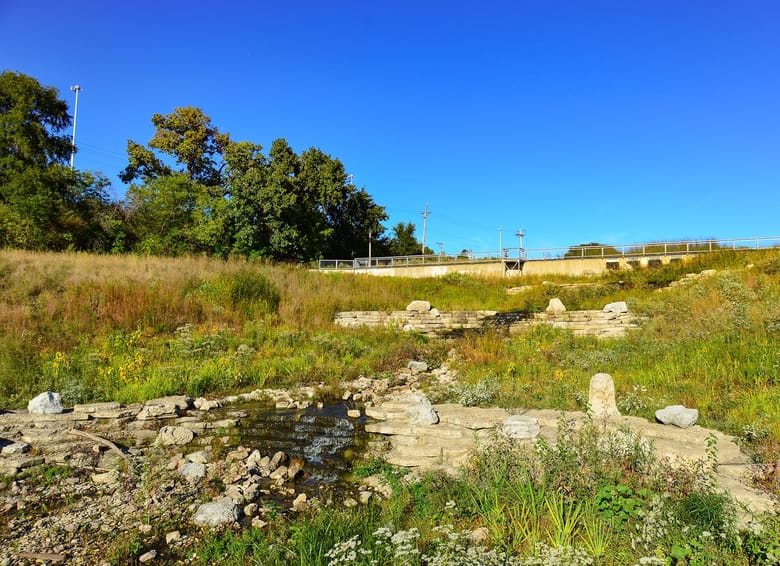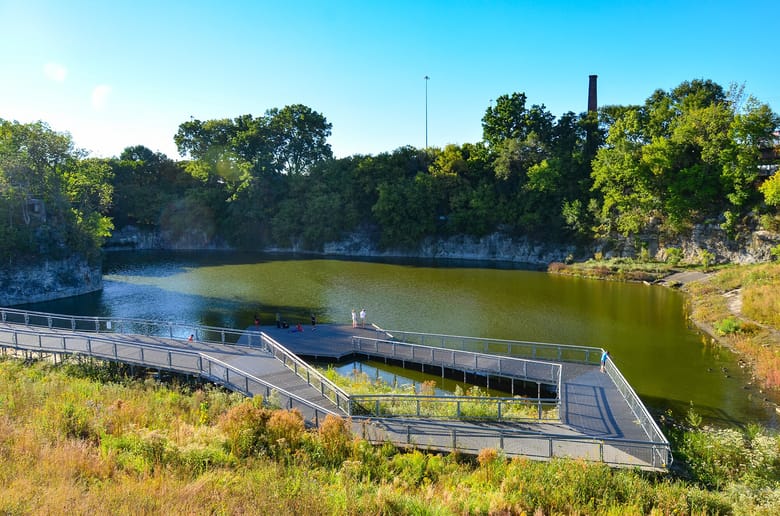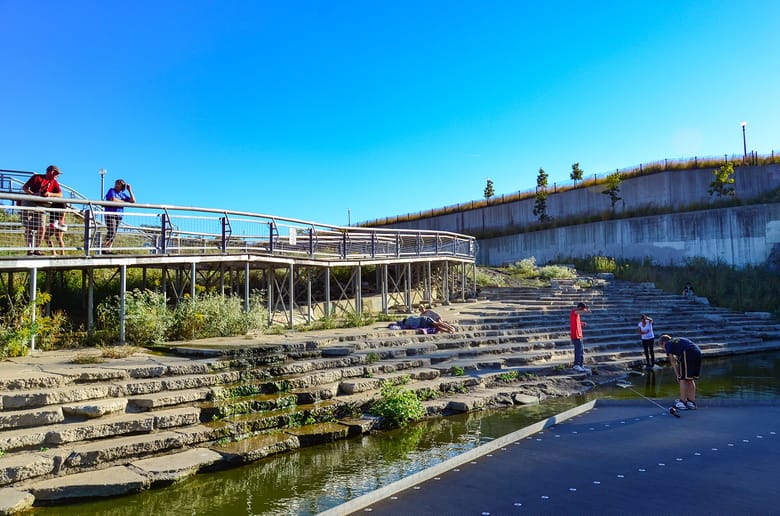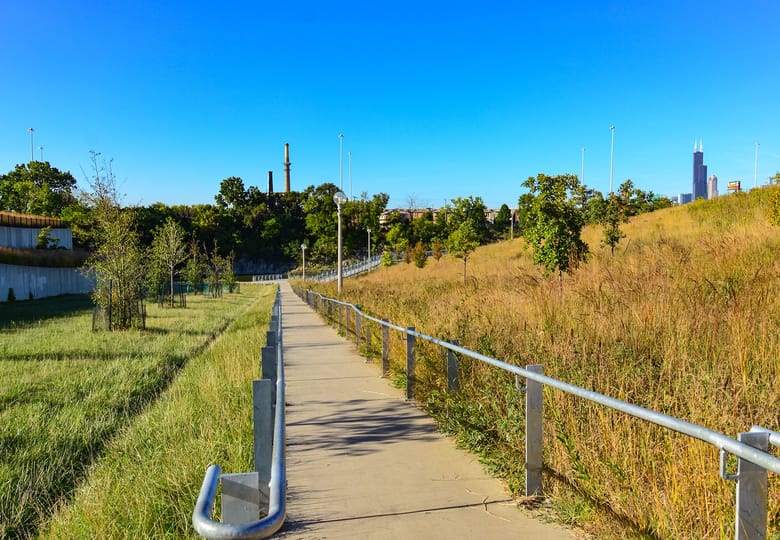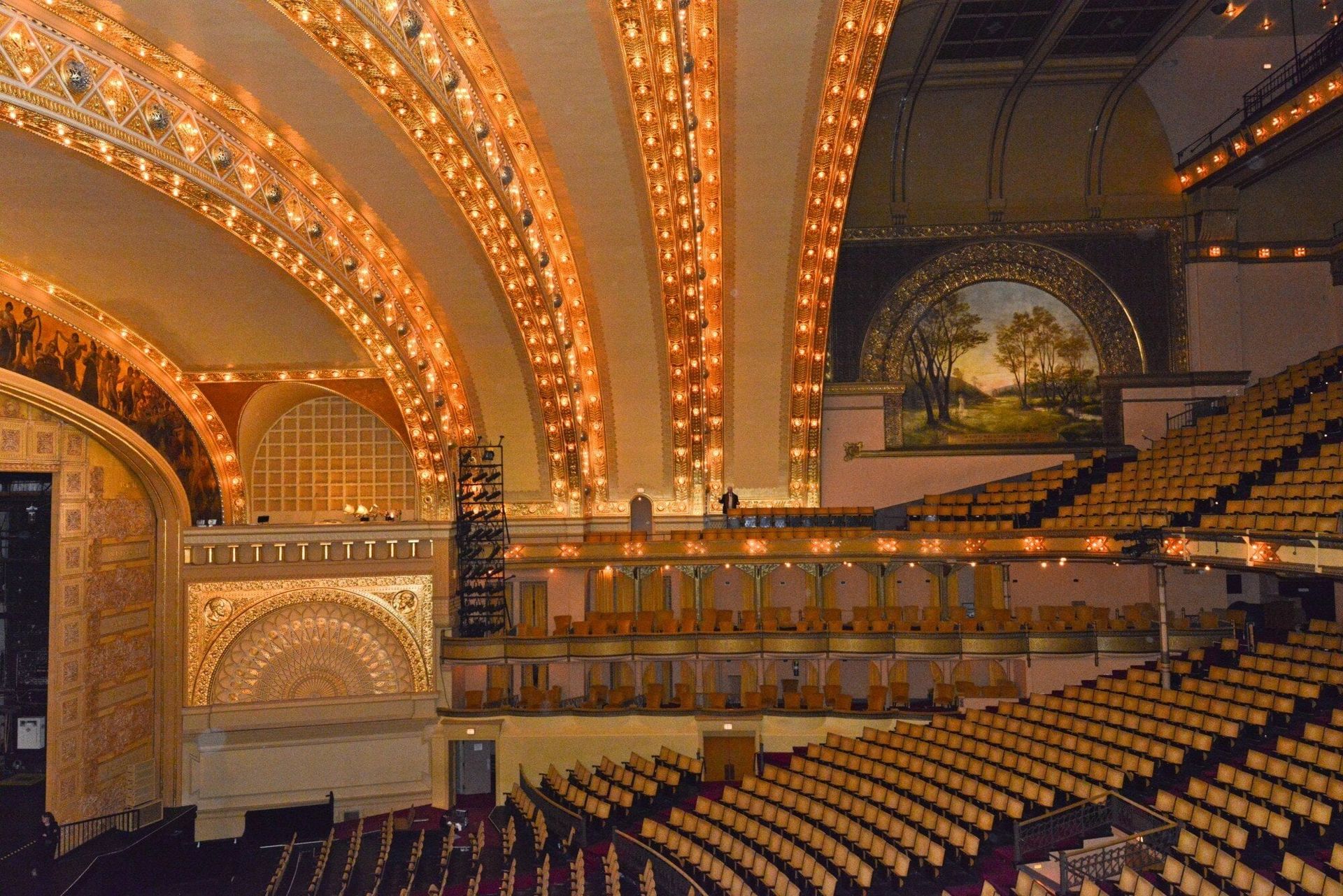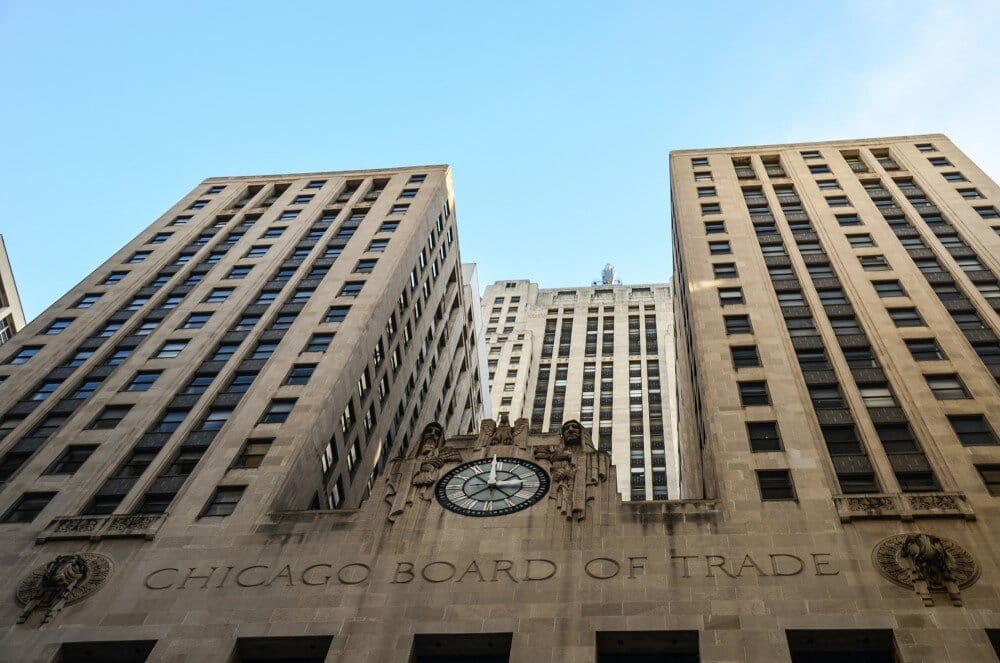Palmisano Park
Chicago is hardly known for its mountains, so the tall grassy hill along Halsted stands out.
Photo by Eric Allix Rogers
Photo by Eric Allix Rogers
Photo by Eric Allix Rogers
Photo by Eric Allix Rogers
Official Name | Palmisano Park |
Address | 2700 S. Halsted St. |
Architect | |
Neighborhood | Bridgeport |
Current Use Type | |
Original Completion Date | 2009 |
A short walk down one of numerous paths reveals an unusual park where a prairie stream gently flows through layers of Bridgeport history.
STEARNS QUARRY
Before there was a hill, there was a hole. Just a few years after Chicago was established, construction was booming and limestone, an important building material, began to be quarried on the Stearns site. Over 130 years of mining, the hole got bigger, eventually extending 380 feet below street level.
TRASH TO TREASURE
In 1970, the city looked at the recently-closed quarry and saw a convenient landfill for construction waste. For nearly 30 years, trucks deposited wood, brick, stone and incinerator ash. When dumping finally ended in the late 1990s, an opportunity to double the amount of park space in Bridgeport presented itself. This idea emerged as the best re-use of the quarry and dump.
BUILDING MOUNT BRIDGEPORT
A landscape architecture firm called Site Design Group was selected to create the unusual park. The landfill was closed and capped with more than 40,000 square feet of clean topsoil, building up a 33-foot hill that offers commanding views of the city. So much of the budget was spent on closing the landfill that trees had to be added later.
AN UNLIKELY FISHING HOLE
Some of the quarry’s steep rock walls were left exposed, which resulted in a dramatic fishing hole. The pier offers catch-and-release fishing in a neighborhood starved for access to nature, and the site’s sunken location sets it far apart from the surrounding city. Henry Palmisano, a fishing advocate and the beloved proprietor of a neighborhood bait shop, passed away during construction of the park, which was named Palmisano Park in his honor.
A small stream cascades through wetland prairie down to the pond, capable of capturing all the rainwater that falls on the site, diverting it from sewers and nourishing the native plantings that dominate the landscape. The hill, the stream and the pond—served by more than a mile of trails made of reclaimed materials—create a remarkable oasis in one of Chicago’s most densely-built neighborhoods.
Did you know?
The pond is stocked with bluegill, the State Fish of Illinois, and several other species.
Did you know?
The park receives and retains approximately 26 million gallons of rainfall annually, and returns enough groundwater to local aquifers to serve the needs of 200,000 people.
Did you know?
The bottom of the pond is 34 feet below street level.
Did you know?
Fossils from the quarry can be found in the collection of the Field Museum.

